Global warfare refers to large-scale conflicts involving multiple nations, driven by political, economic, and social factors. It has shaped history, influencing international relations and global stability.
1.1 Overview of Global Warfare
Global warfare is a complex and multifaceted phenomenon characterized by large-scale conflicts involving multiple nations and ideologies. It encompasses political, economic, and social dynamics that drive international tensions and shape global stability. Understanding global warfare requires examining historical patterns, military strategies, and the role of technological advancements. The impact of warfare extends beyond the battlefield, affecting economies, environments, and human societies. To study this topic effectively, it is essential to employ a structured approach, identifying key themes and utilizing research strategies to analyze the intricate relationships between nations and ideologies. This structured analysis provides a comprehensive understanding of global warfare’s far-reaching consequences.
1.2 Key Themes in Global Warfare
Key themes in global warfare include political tensions, economic rivalries, ideological conflicts, and technological advancements. These themes shape the dynamics of international conflicts, influencing alliances and strategies. Political tensions often arise from competing interests, while economic rivalries drive resource competition. Ideological conflicts, such as communism vs. capitalism, have historically fueled global wars. Technological advancements, like nuclear weapons and cyber warfare, redefine modern combat. Understanding these themes provides insights into the complexities of global warfare, enabling a structured analysis of historical and contemporary conflicts. By focusing on these themes, researchers can identify patterns and connections that explain the evolution of global warfare.
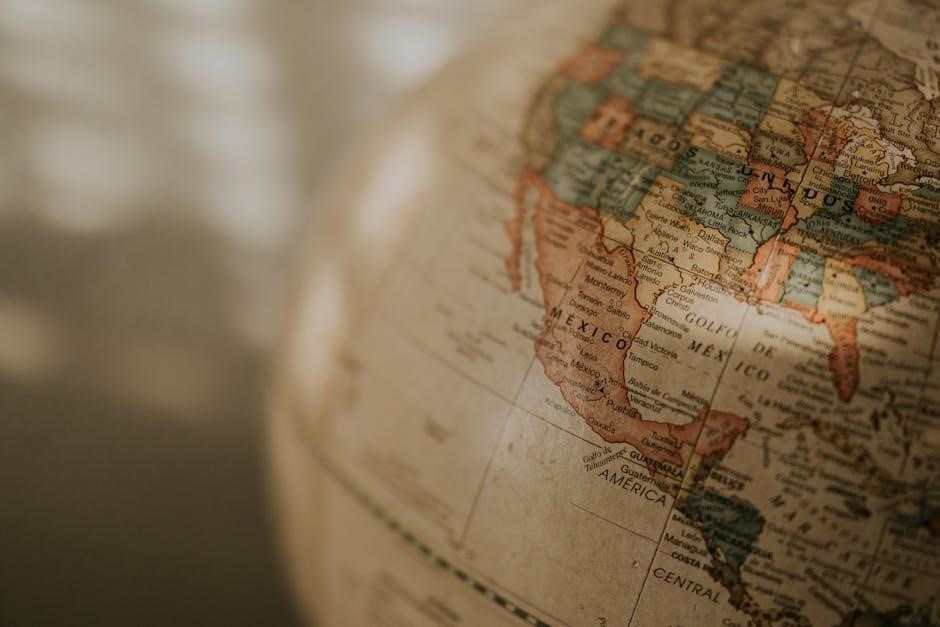
Causes of Global Warfare
Global warfare arises from political tensions, economic rivalries, and ideological conflicts. These factors often escalate due to imperialism, resource competition, and shifting alliances between nations.
2.1 Political Tensions and Alliances
Political tensions and alliances are central to global warfare, often arising from competing interests, territorial disputes, or ideological differences. Alliances between nations can either stabilize regions or escalate conflicts, as seen in historical events like World War I. The formation of alliances, such as NATO or the Warsaw Pact during the Cold War, highlights how political alignments can shape global security. However, shifting allegiances and rivalries can also lead to mistrust and aggression. Proxy wars, where larger powers support opposing sides in regional conflicts, further complicate these dynamics. Understanding these political intricacies is crucial for analyzing the roots of global warfare and its far-reaching consequences.
2.2 Economic Rivalries and Imperialism
Economic rivalries and imperialism have long been significant drivers of global warfare. Competing nations often clash over resources, markets, and territorial control, fueling tensions that can escalate into conflict. Imperialism, the practice of extending a nation’s power through colonization, has historically led to wars over territories and resources. For instance, European colonialism in Africa and Asia during the 19th and 20th centuries created economic and political tensions that contributed to global conflicts. Similarly, modern-day competition for strategic resources like oil and rare minerals continues to influence geopolitical dynamics. Economic interests often underpin military actions, making them a critical factor in understanding global warfare.
2.3 Ideological Conflicts
Ideological conflicts have played a pivotal role in shaping global warfare throughout history. These conflicts arise from fundamental differences in political, religious, or social ideologies between nations or groups. For instance, the Cold War was largely driven by the ideological clash between capitalism and communism, leading to proxy wars and a prolonged state of tension; Similarly, religious ideologies have fueled numerous conflicts, as seen in the Crusades and modern-day sectarian violence. Ideological differences often deepen divisions, making diplomacy challenging and increasing the likelihood of armed conflict. Such conflicts frequently transcend national borders, drawing in multiple nations and escalating into global warfare. Understanding these ideological roots is essential for analyzing historical and contemporary wars.
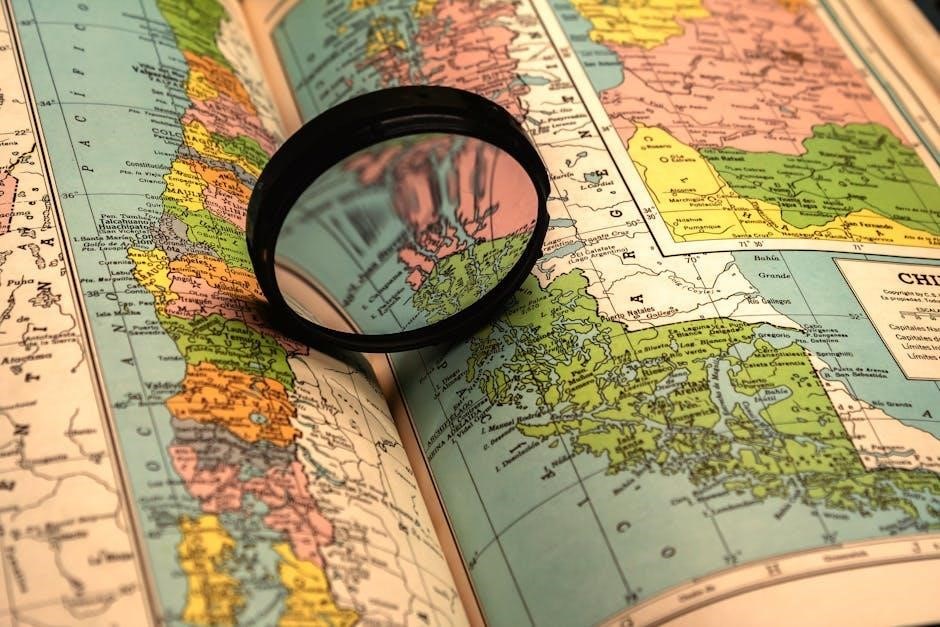
Military Strategies and Tactics
Military strategies and tactics involve planned operations and methods to achieve wartime objectives, evolving over time to adapt to new technologies and enemy countermeasures, crucial for success.
3.1 Conventional Warfare
Conventional warfare involves direct military engagements between nation-states, utilizing traditional armed forces and weaponry. It is characterized by battles between organized armies, following established rules of engagement. This form of warfare often aims to capture territory, destroy enemy forces, or achieve strategic objectives. Historical examples include World War II and the Korean War, where conventional tactics dominated. Modern conventional warfare incorporates advanced technologies, such as tanks, artillery, and airpower, to gain superiority on the battlefield. However, its effectiveness is limited by geopolitical complexities, economic costs, and the rise of asymmetric conflicts, leading nations to adapt their strategies while still relying on conventional methods.
3.2 Guerrilla Warfare
Guerrilla warfare is a form of irregular combat waged by small, mobile groups against a larger, often conventional force. It relies on tactics such as ambushes, sabotage, and hit-and-run attacks to weaken the enemy. This strategy is often employed by insurgent groups or resistance movements lacking formal military resources. Guerrilla warfare emphasizes intelligence, flexibility, and the support of local populations to sustain operations. Historical examples include the Viet Cong in the Vietnam War and Afghan mujahideen during the Soviet-Afghan War. Its effectiveness lies in prolonging conflicts, forcing the conventional army into costly and politically unpopular engagements, ultimately undermining their will to continue fighting.
3.3 Technological Advancements in Warfare
Technological advancements have revolutionized warfare, enabling greater precision, lethality, and strategic capabilities. Modern technologies like drones, cyber warfare tools, and artificial intelligence (AI) have transformed how conflicts are waged. Drones allow for targeted strikes with minimal risk to personnel, while AI enhances decision-making and surveillance. Cyber warfare disrupts enemy systems, creating new fronts in digital spaces. Precision-guided munitions reduce collateral damage, and advanced communication systems improve coordination. These innovations have also led to asymmetric warfare, where smaller forces can counter larger adversaries. However, ethical concerns arise, as technologies like autonomous weapons raise questions about accountability and the future of combat.

Major Conflicts of the 20th Century
The 20th century witnessed devastating global conflicts, including World War I, World War II, and the Cold War. These wars reshaped nations, caused massive casualties, and led to significant political and economic shifts worldwide.
4.1 World War I
World War I (1914–1918) was a global conflict sparked by the assassination of Archduke Franz Ferdinand, leading to the clash of major powers. It involved complex alliances, with the Allies (France, Britain, Russia) opposing the Central Powers (Germany, Austria-Hungary, Ottoman Empire). Trench warfare dominated the Western Front, causing massive casualties. The war introduced new technologies like tanks, machine guns, and chemical weapons. The United States entered late, tipping the balance. The Armistice of 1918 ended hostilities, and the Treaty of Versailles imposed harsh penalties on Germany, contributing to future conflicts. The war resulted in over 37 million casualties, reshaping global politics and economies.
4.2 World War II
World War II (1939–1945) was a global conflict involving the Axis Powers (Germany, Italy, Japan) and the Allies (U.S., U.K., Soviet Union). It began with Germany’s invasion of Poland, escalating into a war that spanned Europe, Asia, and Africa. Key events included the Battle of Britain, the invasion of the Soviet Union, and Japan’s attack on Pearl Harbor. The Holocaust, during which six million Jews were murdered, remains a horrific reminder of the war’s atrocities. The war ended with the atomic bombings of Hiroshima and Nagasaki, leading to Japan’s surrender. It resulted in over 70 million deaths, making it history’s deadliest conflict, and reshaped the global political landscape.
4.3 The Cold War
The Cold War (1947–1991) was a decades-long ideological and geopolitical rivalry between the United States and the Soviet Union, avoiding direct military confrontation. It emerged from post-WWII tensions over communism vs. capitalism. Key events included the Berlin Blockade, the Korean and Vietnam Wars, the Cuban Missile Crisis, and the Space Race. The arms race and proxy wars dominated the era, with both sides seeking global influence. The policy of containment aimed to limit Soviet expansion; The Cold War ended with the collapse of the Soviet Union in 1991, marking a significant shift in global power dynamics and the rise of the United States as the world’s sole superpower.

Impact of Warfare
Warfare causes immense human suffering, economic devastation, and environmental degradation, reshaping societies and global stability while fostering long-term displacement and psychological trauma for individuals and communities worldwide.
5.1 Human Cost and Casualties
Warfare inflicts profound human suffering, resulting in massive casualties, widespread injuries, and long-term psychological trauma. Millions lose their lives, while survivors often face debilitating physical and emotional scars. Civilians, including women and children, are increasingly targeted, leading to displacement and loss of livelihoods. The destruction of healthcare infrastructure exacerbates suffering, as medical aid becomes scarce. Psychological trauma, such as PTSD, lingers for generations, affecting families and communities. The loss of human capital disrupts societies, leaving deep social and economic scars. Historical conflicts, like World Wars I and II, highlight the staggering human toll, with millions killed or affected, reshaping global demographics and societal structures.
5.2 Economic Impact on Nations
Global warfare imposes severe economic burdens on nations, disrupting trade, infrastructure, and productivity. The costs of military mobilization, weaponry, and maintaining large armies strain national budgets, often leading to inflation and debt accumulation. Wars destroy critical infrastructure, such as factories, transportation networks, and energy systems, crippling economic output. Reconstruction efforts post-conflict further drain resources, delaying recovery. Trade relationships are disrupted, causing economic isolation and loss of revenue. Additionally, the human capital loss from casualties reduces the workforce, hindering long-term economic growth. The economic strain can lead to societal instability, perpetuating cycles of conflict and slowing global economic development for decades.
5.3 Environmental Consequences
Global warfare devastates the environment, causing long-term ecological damage. Weapons and explosions release toxic chemicals, polluting air, water, and soil, leading to health crises for both humans and wildlife. Deforestation and habitat destruction result from military operations, displacing species and disrupting ecosystems. Oil spills from damaged infrastructure contaminate marine life, while nuclear weapons testing leaves radioactive fallout, affecting entire regions. Warfare also accelerates climate change through carbon emissions from military machinery and transportation. The environmental toll of war often outlasts the conflict itself, creating a legacy of degradation that hinders recovery and endangers future generations. Environmental damage is a silent but deadly casualty of global warfare.
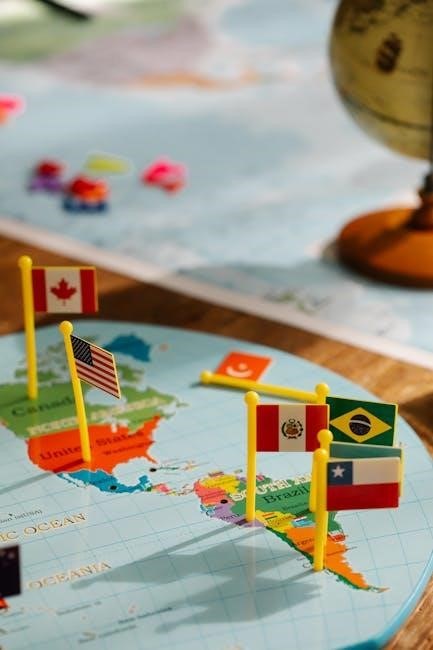
Role of International Organizations
International organizations play a crucial role in mediating conflicts, establishing treaties, and promoting global cooperation to prevent and resolve warfare through diplomacy and humanitarian efforts.
6.1 United Nations and Peacekeeping
The United Nations (UN) plays a vital role in global peacekeeping through its missions and initiatives. Established in 1945 after World War II, the UN aims to maintain international peace and security. Its peacekeeping forces are deployed in conflict zones to monitor ceasefires, protect civilians, and facilitate humanitarian aid. The UN Security Council mandates these missions, often with troop contributions from member states. While the UN has successfully prevented the escalation of many conflicts, its effectiveness is sometimes limited by funding, political biases, and the challenges of operating in complex environments. Despite these hurdles, the UN remains a cornerstone of global conflict resolution efforts.
6.2 International Treaties and Agreements
International treaties and agreements are crucial in regulating global warfare and promoting peace. Treaties like the Treaty of Versailles (1919) and the Geneva Conventions (1949) aim to establish rules for warfare and protect civilians. The Nuclear Non-Proliferation Treaty (1968) seeks to prevent the proliferation of nuclear weapons, while the Paris Agreement (2015) addresses climate change as a security threat. These agreements reflect humanity’s efforts to manage conflict through diplomacy and cooperation. By fostering dialogue and accountability, they provide frameworks for resolving disputes without violence, though enforcement remains a challenge. Such treaties underscore the importance of collective action in maintaining global stability.
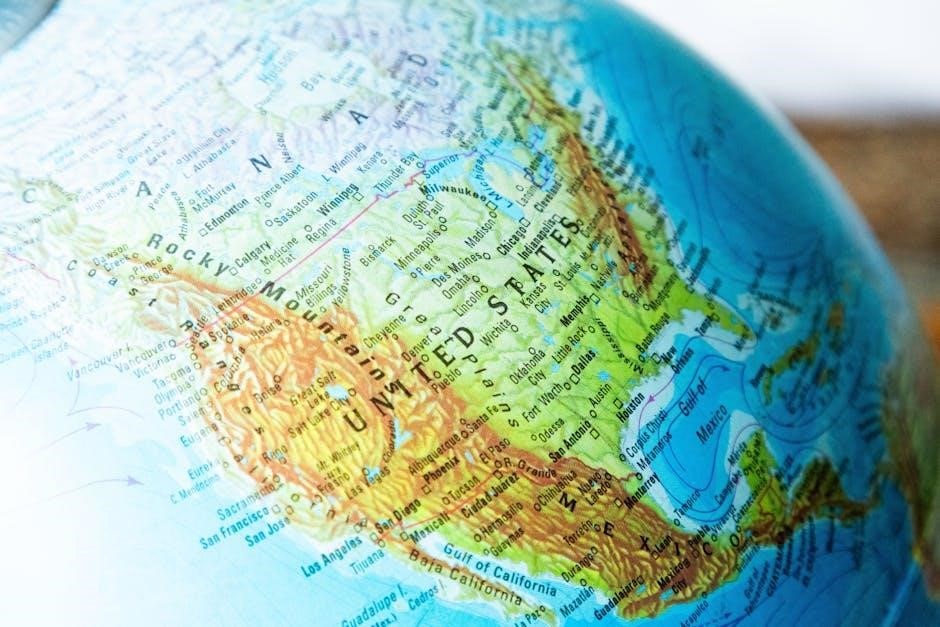
Modern Global Warfare
Modern global warfare involves complex, multifaceted conflicts driven by shifting geopolitical dynamics, technological advancements, and non-state actors, reshaping traditional notions of conflict and security.
7.1 Asymmetric Warfare
Asymmetric warfare involves conflicts where opposing sides have significantly different military capabilities, strategies, or resources. It often pits conventional forces against non-state actors, such as insurgents or guerrilla groups; These groups employ unconventional tactics like ambushes, sabotage, and hit-and-run attacks to exploit weaknesses in the stronger opponent’s defenses. Asymmetric warfare also includes psychological warfare, aiming to erode public support for the opposing side. Modern examples include insurgencies in Afghanistan and Iraq, where local groups have effectively countered technologically superior forces. The use of improvised explosive devices (IEDs) and cyberattacks further highlights the evolving nature of this type of warfare in contemporary conflicts.
7.2 Cyber Warfare
Cyber warfare refers to the use of digital attacks to disrupt, damage, or gain unauthorized access to critical systems, infrastructure, or information. It involves techniques such as hacking, malware, ransomware, and denial-of-service attacks. These operations are often conducted by state-sponsored actors, non-state groups, or individuals to achieve strategic or political goals. Cyber warfare can target military systems, government databases, financial institutions, or even personal devices. Its anonymous nature makes attribution difficult, allowing attackers to hide their identities. This form of warfare is increasingly significant in modern conflicts, as it can cause widespread disruption without physical violence, making it a key tool in global power struggles.
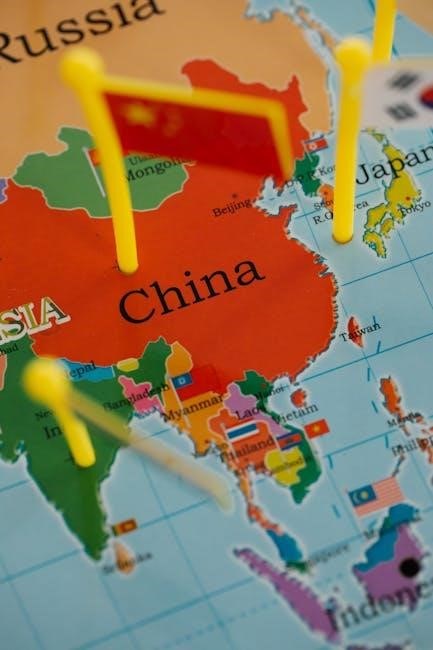
7.3 The Role of Terrorism
Terrorism plays a significant role in global warfare as a tactic employed by non-state actors to achieve political, ideological, or religious goals. It involves the use of violence, intimidation, or threats against civilians or military targets to create fear and disrupt societal stability. Terrorist groups often operate across borders, making them difficult to combat. Their methods include bombings, kidnappings, and assassinations, aiming to draw attention to their causes or force concessions from governments. Modern terrorism is fueled by globalization, technology, and social media, which facilitate recruitment, funding, and communication. Nations face challenges in balancing security with civil liberties when addressing this evolving threat.

Future of Global Warfare
The future of global warfare may involve increased reliance on technology, economic competition, and asymmetric conflicts, reshaping traditional military strategies and geopolitical dynamics worldwide.
8.1 Emerging Technologies
Emerging technologies are reshaping the future of global warfare, with advancements in artificial intelligence, autonomous weapons, and cyber capabilities leading the transformation. AI-driven systems enable advanced surveillance, decision-making, and autonomous weaponry, while cyber warfare threatens critical infrastructure and data security. Space-based technologies are also becoming pivotal, with nations investing in satellite systems for communication and missile defense. Additionally, biotechnology and genetic engineering pose new ethical dilemmas, potentially creating biological weapons. Quantum computing could revolutionize encryption and intelligence gathering, giving nations a strategic edge. These technologies are not only changing how wars are fought but also raising concerns about global stability and ethical boundaries.
8.2 Global Alliances and Shifts in Power
The global landscape is experiencing significant shifts in power dynamics, with emerging nations like China and India gaining prominence. Traditional alliances, such as NATO and the European Union, are adapting to new geopolitical realities. Regional blocs are forming, influenced by economic and political alignments. The rise of multipolar systems challenges the dominance of established powers. Meanwhile, shifting alliances create uncertainties in international relations, as nations reevaluate their partnerships based on shared interests and security concerns. These changes are reshaping global governance, trade, and conflict resolution, leading to a more complex and interconnected world order.
Global warfare’s complexities highlight the need for diplomacy and cooperation to prevent conflicts, ensuring a safer, more stable world for future generations.
9.1 Summary of Key Points
Global warfare is shaped by political tensions, economic rivalries, and ideological conflicts. Military strategies range from conventional to guerrilla and cyber warfare. World Wars I and II, along with the Cold War, highlight the devastating impacts on humanity, economies, and the environment. International organizations like the UN play a crucial role in maintaining peace. Modern warfare includes asymmetric conflicts and terrorism, emphasizing the need for diplomacy and cooperation to prevent future crises. Understanding these dynamics is essential for fostering global stability and addressing emerging challenges in an increasingly interconnected world.
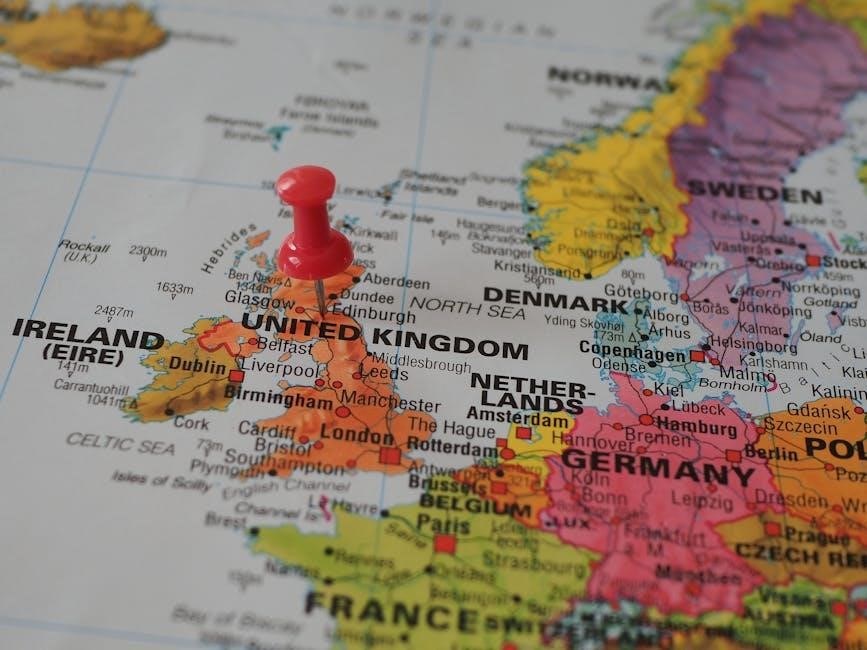
9.2 Reflection on the Importance of Understanding Global Warfare
Understanding global warfare is crucial for grasping the complexities of international relations, conflict resolution, and human history. By analyzing past and present conflicts, we can identify patterns and lessons to prevent future wars. The study of global warfare highlights the interconnectedness of political, economic, and social factors that drive nations to conflict. It also underscores the human cost of war, emphasizing the need for diplomacy and cooperation. In a rapidly changing world, understanding global warfare equips individuals to engage in informed discussions about peace, security, and the challenges of maintaining stability in an increasingly complex geopolitical landscape.

